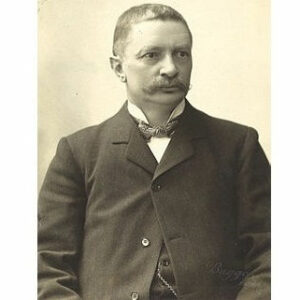Johannes Rydberg, the brilliant physicist who invented the Rydberg formula for estimating photon wavelengths, was a Swedish scientist who also contributed many other key discoveries and formulae to science. He was a scientist who was passionate about science for its own reason. He was fascinated by experimental physics, which hampered his professional advancement. His father died while he was a tiny child, leaving him with a rough childhood marred by financial difficulties. He was a bright and inquisitive student who excelled in school and grew captivated by numbers. In college, he majored in mathematics, but his interests expanded to include physics and chemistry. He published his first paper on the periodic table, which piqued his interest. As a committed scientist, it was his passion for the subject that kept him from making a fortune! He was more interested in experimental physics than theoretical physics, which hampered his academic career. To augment his income, he was obliged to work as an accountant in a local bank at one point! But it was his passion for physics that inspired him to develop the Rydberg formula and coin the terms Rydberg constant and Rydberg atoms.
Childhood and Adolescence
Sven and Maria Anderson Rydberg raised him in Sweden. When Janne was four years old, his father, a merchant and modest ship owner, died. As a result of his mother’s financial difficulties, he had a terrible upbringing.
In 1873, he graduated from high school and enrolled in the University of Lund, where he earned a bachelor’s degree in philosophy in 1875. Math had always been his favorite subject, which he pursued after completing his bachelor’s degree. In 1879, he received his degree in mathematics.
Career of Johannes Rydberg
In 1880, he joined Lund University as an assistant lecturer or docent in mathematics. From pure mathematics, his interests had broadened to include mathematical physics.
In 1882, he changed jobs to become an assistant instructor in physics, owing to his growing interest in the subject. He proposed and received approval for a new physics building to house the Institute of Physics the same year.
Over the course of his career, he would conduct his tests and formulate many of his discoveries at the new facility. His passion for experimental physics kept him from achieving much as a professor.
He had always been fascinated by the periodic table of elements, and it was this curiosity that led to his studies in spectroscopy, the discipline to which he contributed the most. In 1884, he wrote his first scientific paper on the periodic table.
He realized that it was feasible to split the spectral lines belonging to an element in a number of different series during the 1880s and attempted to create a simple formula for expressing it.
By 1887, his research had progressed to the point where he wrote to the Royal Swedish Academy of Sciences, requesting financial help to continue his research.
In 1890, he published his important spectral paper, ‘On the Structure of the Line Spectra of Chemical Elements.’ This work, which is regarded pivotal in nature, made a significant addition to the field of spectroscopy.
Spectroscopy was an important topic of physics in the nineteenth century, and many scientists focused on it. However, putting the massive volume of data into a mathematically ordered format was a challenge.
Rydberg’s simple formula made it possible to display spectrum data in a way that academics could understand while researching the importance of spectra. Other scientists such as Heinrich Kayser and Carl Runge competed with him in developing this formula.
In 1897, he was appointed as a provisional professor of physics at Lund University while continuing to work as an assistant lecturer. Rydberg had to work as an accountant at a local bank to support his growing family because he was paid badly for his work.
After years as a temporary professor, he was ultimately promoted to full professor of physics at Lund in 1901. He held this position until 1915, when he was compelled to quit due to illness.
Major Projects of Johannes Rydberg
He is best known for proposing the Rydberg Formula, which is used in atomic physics to explain the wavelengths of spectral lines of several chemical elements. Rydberg constants and Rydberg atoms are two notions that are connected.
Achievements & Awards
In 1917, he was nominated for the Nobel Prize in Physics, but no awards were given out that year. In 1920, he was nominated for the Nobel Prize again, but he had died the previous year.
Shortly before his death in 1919, he was elected a Fellow of the Royal Society.
Personal History and Legacy
In 1886, he married Lydia Eleonara Mathilda Carlsson, the daughter of a doctor. They had three children together.
During the last few years of his life, he was in poor health. He was diagnosed with a weak heart and blood circulation issues, and he spent the last three years of his life in the hospital. In 1919, at the age of 65, he died of a cerebral hemorrhage.
Estimated Net Worth
The estimated net worth of Johannes Rydberg is unknown.


